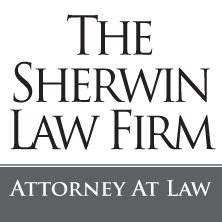Reversing a Foreclosure
Fall has been off to a great start for me, and I hope for you too. My busy schedule is providing me opportunities to work on some great cases and I’m looking forward–to what I hope–will be some rewarding outcomes in the end. So far, so good: I have reached favorable resolutions for several of my foreclosure defense cases. One of my favorite parts of doing these cases is the actual process of reversing a foreclosure, a topic I want to discuss here.
What Happens to the Ownership of a Home After Foreclosure?
Following a foreclosure sale, the lender will record a foreclosure deed in the applicable land records for the property. “Recording” is the act by which documents are made part of the public land registries. Deeds and mortgages are the most commonly recorded documents, and searching the appropriate land registry is how one learns about the history of a particular piece of property. In Massachusetts, these records can be found online: http://www.masslandrecords.com.
A foreclosure deed is among these recorded documents, and states that the mortgagee held a foreclosure sale of the property and lists who purchased the property at the auction sale (which is often the mortgagee itself).
Challenging a Foreclosure Sale
Massachusetts is a non-judicial foreclosure state: a lender does not need to go to court to foreclose a home. A homeowner, however, has the right to challenge the validity of a foreclosure sale, which generally comes either through a defense in a post-foreclosure eviction or in a separate civil lawsuit. If successful, a homeowner can ask the court to “undo” the foreclosure sale and restore ownership to the homeowner. How is this done?
Reversing a Foreclosure
My approach to reversing a foreclosure involves requesting a declaratory judgment from the court. A declaratory judgment, simply put, is a court order that resolves a legal dispute. In Abate v. Fremont Investment & Loan, the Supreme Judicial Court stated that declaratory judgments are a proper means of challenging a foreclosure’s validity (page 835 of the decision).
I often request a declaratory judgment stating that the underlining foreclosure sale is void, and ownership of the home belongs to the homeowner. If a settlement is reached in one of these cases, the homeowner and bank can (and should) jointly request a declaratory judgment. A declaratory judgment is generally a 1-2 page document stating the case name and number, a summary of the court’s order, and is signed by a judge.
Once a court grants a declaratory judgment, I record this in the land records, along with the other property documents. As part of the “chain of title”, the property is now officially back in the homeowner’s name and the foreclosure is reversed. This recorded declaratory judgment will include a reference to the previously recorded foreclosure deed, so anyone searching the land records will learn of this court order.
Conclusion
Reversing a foreclosure is one of the most rewarding parts of my job. It is a great feeling to see the actual result of my work: an official order that gives someone their home back. If you find yourself in need of foreclosure defense, contact me for a consultation.

